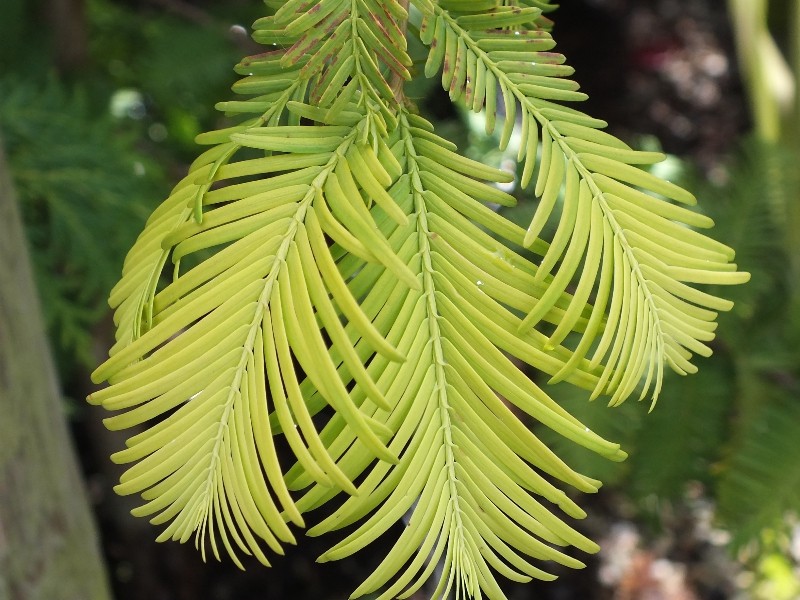

I could plant it, but eventually it would outgrow the space I have available. I went home to try to find room for just one more tree in my garden. I found myself smitten with its fall coloring one day in the nursery.
#METASEQUOIA GLYPTOSTROBOIDES GOLD RUSH FULL#
In the Pacific Northwest, the gold foliage will not burn in full sun, unlike other gold foliage that has this tendency. It has not been in cultivation long enough for it to reach its full potential. This is a fast-growing tree, reaching 15-20 feet in ten years, after 20 or more years it will reach 50 feet. The name, Metasequoia, comes from the Greek word meta, meaning changed and refers to sequoia, which it is related to. Dutch horticulturalist Peter Zweinburg brought it to Europe and changed the name to 'Gold Rush'.

Metasequoia glyptostroboides 'Gold Rush' was found as a seedling in Japan and was named 'Golden Ogi', which means the golden mantle. Michael Dirr once wrote, "This tree provides a case history of perhaps how endangered species should be managed. Now, it is once again growing on this continent. This tree grew on the North American continent over 15 million years ago. 'Ogon' was one of two plants selected in 2006, the inaugural year of the highly popular ACS Collectors' Conifer of the Year Program.Once thought to be extinct, Dawn redwood was discovered in 1944 in China, soon after million year old fossils from Metasequoias were found in Japan. It is also occasionally seen listed as 'Golden Mantle.' Regardless, since 'Ogon' is the original recorded cultivar name that is the only one considered valid. patent for this tree under the name, 'Golden Oji.' As it became aware that the plant was already circulating with a couple of different cultivar names, the patent was soon withdrawn. In 1995, New Oji Paper Company applied for a U.S. Around that same time, Larry Stanley & Sons nursery, Boring Oregon received it and starting distributing it under the name 'Gold Rush,' which to this day is the most commonly seen misspelling. In 1993, Pieter Zwijnenburg Jr., Boskoop, The Netherlands got the first propagation material directly from Japan and renamed it 'Goldrush' and began distributing it under that name in 1997. With this definition, the name 'Ogon' is the valid cultivar name. Its original Japanese name was 'Ogon' which translates to "gold bullion" or "gold coin". This plant has a very long and confusing saga pertaining to its proper nomenclature. The original tree was planted in 1977 at the Kameyama breeding station, Institute for Forest Tree Improvement, New Oji Paper Co., Ltd, Mie, Japan. This cultivar originated in 1974 in Japan as a seedling selected from a batch of X-ray irradiated seed by the New Oji Paper Company. Young trees that do not receive adequate irrigation are highly prone to sun damage. It should be noted that the foliage will burn in the full sun. A mature specimen will easily exceed 20 feet (7 m) tall after 10 years in the landscape. 'Ogon' will create a striking statement in the landscape with it's golden foliage and heavily buttressed trunk. It is a fast-growing selection of dawn redwood with pleasing bright yellow feathery foliage that will turn tawny brown before being shed in the fall. Metasequoia glyptostroboides 'Ogon' is commonly known by the trade name Metasequoia glyptostroboides 'Gold Rush'.


 0 kommentar(er)
0 kommentar(er)
